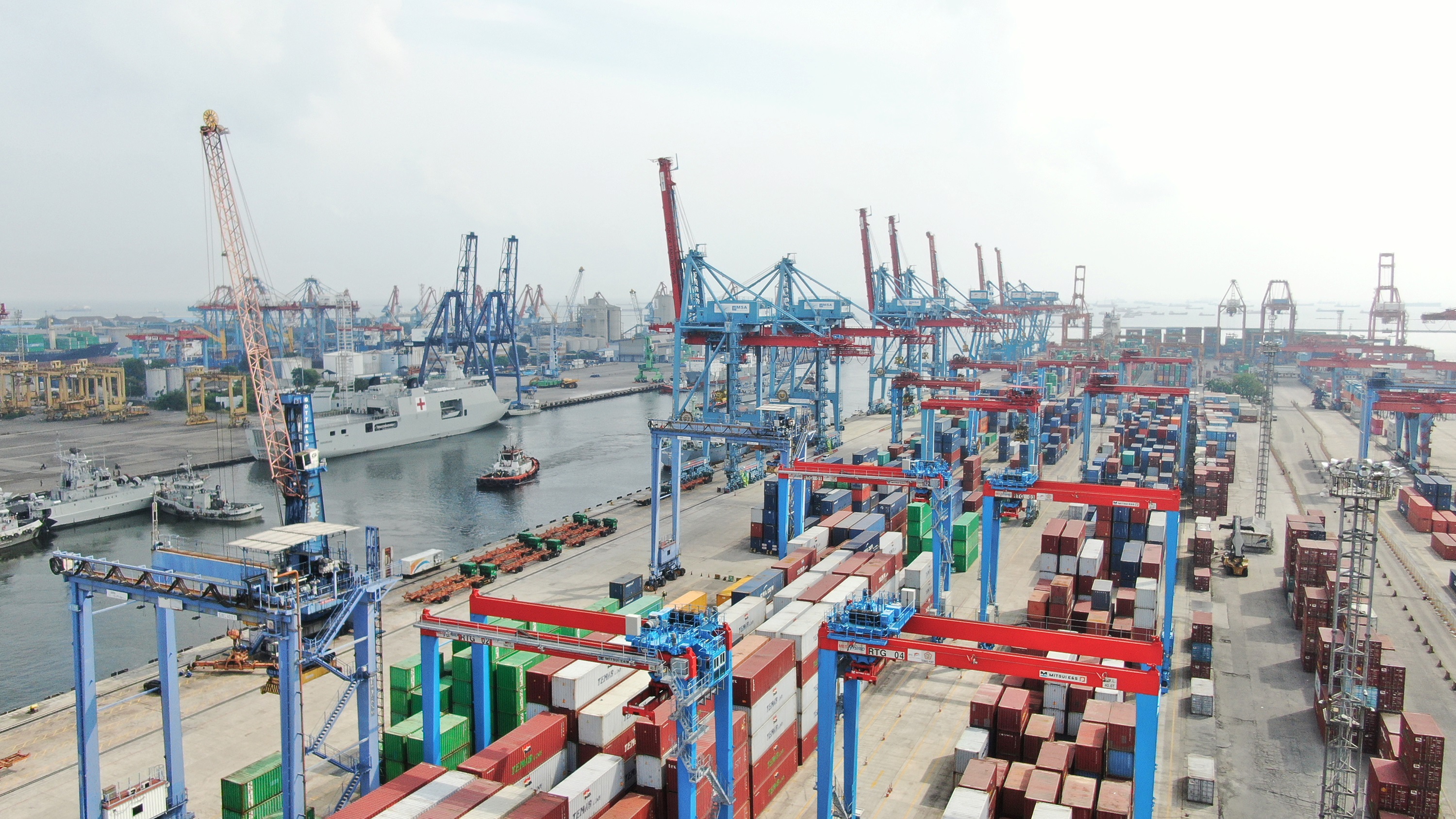
Pelindo Petikemas Lakukan Peremajaan Alat Bongkar Muat Peti Kemas
Surabaya (05/07) – Container terminal service company PT Pelindo Petikemas Terminal (SPTP) plans to rejuvenate a number of loading and unloading equipment at Surabaya Container Terminal (TPS Surabaya) and IPC TPK Long Area. Rejuvenation of equipment includes 4 QCC (quay container crane) units or container loading and unloading equipment at the wharf and 14 RTG (rubber tyred gantry) units which are container loading and unloading equipment at the stacking yard for TPS Surabaya and 1 QCC unit for IPC TPK Long Area . The tool will replace a number of equipment currently used to support operational activities at each container terminal.
Corporate Secretary of PT Pelindo Terminal Container, Widyaswendra, said that the company is rejuvenating the equipment to suit customer service needs. According to him, the size of the ships that stop at TPS Surabaya and IPC TPK Area Panjang are getting bigger with an increasing amount of cargo. These conditions require reliable container loading and unloading equipment to maintain container terminal productivity. For the procurement of equipment, PT Pelindo Terminal Petikemas has prepared funds of around US$50 million for 5 QCC units and US$38 million for 14 RTG units.
"The procurement of this new tool is to improve the quality of service at TPS Surabaya and IPC TPK Long Area, later the ships that enter the terminal will be even bigger. We, as the terminal operator, must be prepared for these conditions by rejuvenating the equipment according to the needs of ship loading and unloading in the future," explained Widyaswendra, Wednesday (05/07).
Currently at TPS Surabaya there are 12 QCC units and 30 RTG units which are used to service container terminal activities. Widyaswendra said that the procurement of new equipment would replace some of the existing equipment. Furthermore, the old equipment at TPS Surabaya and IPC TPK Area Panjang will be used to support the needs of equipment at other terminals that need it through an asset optimization program. Asked about when the new tool will operate, his party has not been able to provide a definite time. According to him, it takes approximately 2-3 years because it takes time for the manufacturing process, shipping, to assembly at the terminal.
"Currently it is still in the early stages of the auction for the procurement of goods and services, the process until the tool can operate is still quite long," he added.
Currently at TPS Surabaya there are 12 QCC units and 30 RTG units which are used to service container terminal activities. Widyaswendra said that the procurement of new equipment would replace some of the existing equipment. Furthermore, the old equipment at TPS Surabaya and IPC TPK Area Panjang will be used to support the needs of equipment at other terminals that need it through an asset optimization program.
Asked about when the new tool will operate, his party has not been able to provide a definite time. According to him, it takes approximately 2-3 years because it takes time for the manufacturing process, shipping, to assembly at the terminal.
"Currently it is still in the early stages of the auction for the procurement of goods and services, the process until the tool can operate is still quite long," he added.
PT Pelindo Terminal Petikemas recorded that the flow of containers at TPS Surabaya in semester 1 of 2023 was 674,890 TEUs. This number grew by around 1 percent when compared to the same period in 2022 which was recorded at 668,244 TEUs. This number consists of 644,770 foreign (international) containers and 30,120 domestic (atingc) containers. Head of DPC Indonesian National Shipowners Association (INSA) Surabaya Stenvens Handry Lesawengen said that new equipment is urgently needed at TPS Surabaya, especially QCC. He said that the QCC currently at TPS Surabaya can only reach 12 rows (the arrangement of containers follows the width of the ship) while the larger ships will be up to 18 rows. With the existence of the new tool it is also expected to boost the productivity of container loading and unloading at the terminal.

